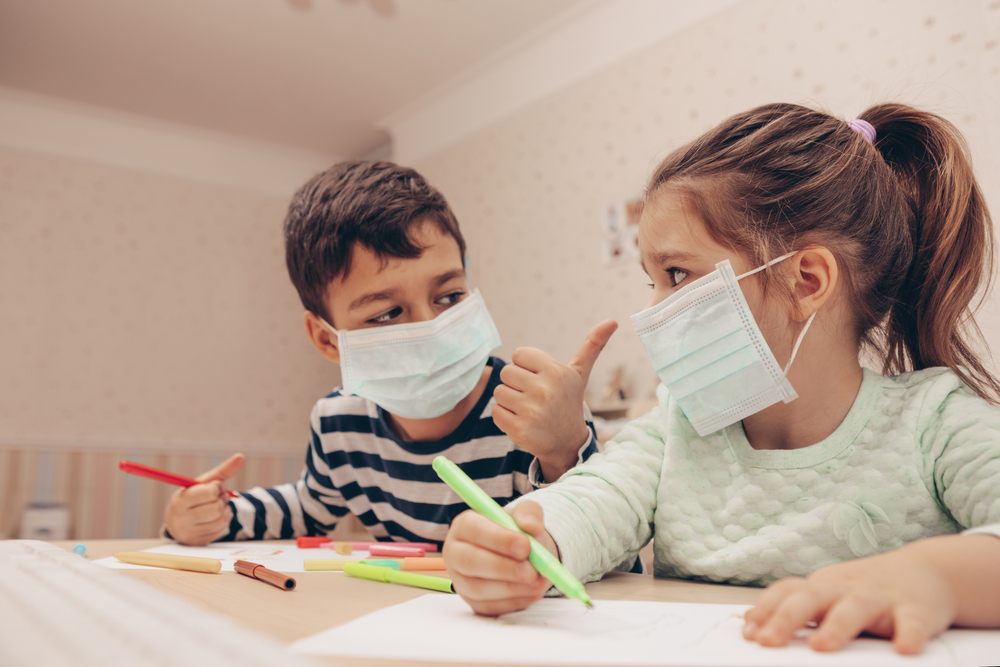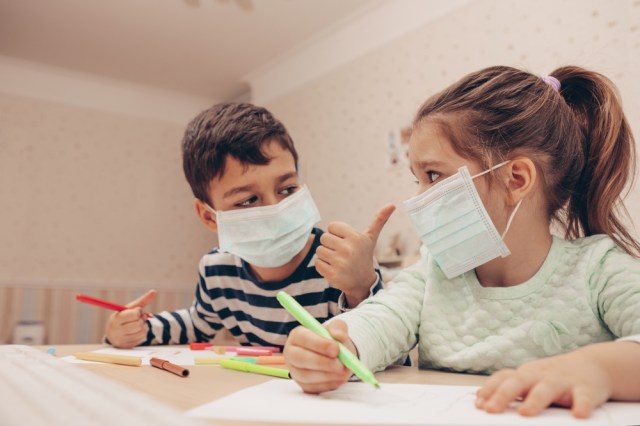
With the election (hopefully) behind us, we are returning to the subject of COVID-19 and its consequences for all of us, especially children. We have reflected on the “silver linings” of corona time, the challenges of social distancing, and the stress and anxiety of staying safe. Now, let’s talk about the emotional toll of mask-wearing.
Once my local area reduced its daily infection rate to below 1%, I cautiously returned to doing my own grocery shopping and various other errands in the community. While I was heartened to see total adherence to the medical experts’ recommendation for masking, I felt immediately that without access to facial expressions, some feelings of social isolation continued. I’m happy to report that over time, we have all gotten better at making eye-contact and connecting while wearing a mask.
I was inspired by my granddaughter’s teachers at the Creative Steps Early Childhood Center and their efforts to support young children in staying emotionally connected while wearing masks. In a recent newsletter, they outlined the activities they have designed and implemented to help pre-kindergarten age children read facial cues and body language.
From “emotional charades” to reading books about feelings, the class had an opportunity to discuss and name emotions. They had lots of opportunities to share their experiences with different feelings as well. The children were photographed after choosing – then acting out a sentiment from a “Feeling Jar.” These pics became the basis for a “Mood Wall,” which has remained a popular catalyst for discussion in their classroom.
As parents, grandparents, and caregivers, we can be mindful of the social and emotional challenges that mask-wearing present. Letting kids know that we recognize the difficulties and providing practice with some tools to meet those challenges will go a long way in supporting their social and emotional development and health. We can emphasize that using words and listening to the words of others are an important part of communication. But, there are other ways to communicate as well; paying attention to a person’s eyes, hands, and body language is helpful in providing clues to how they are feeling.
Here are four things that you can do to support the healthy social and emotional development of young children during the pandemic.
-
Acknowledge that it is hard to express one’s feelings or to understand the feelings of others when we are all wearings masks.
-
Identify ways to express emotions, such as using words, and using our bodies. Illustrate how gestures, such as making a heart sign, stomping our feet, shaking our arms in a cheer, or other body languages can express a feeling. Point out that even while wearing a mask, our eyes can communicate a smile or other emotions.
-
Use children’s books to identify and anticipate their feelings. In most stories, there is a point where we can ask children how they think the character is feeling.
-
Play guessing games while wearing masks, like “Feelings Charades”.
Please let us know how you are you dealing with social and emotional connections while masking, we all have so much to learn from each other.











